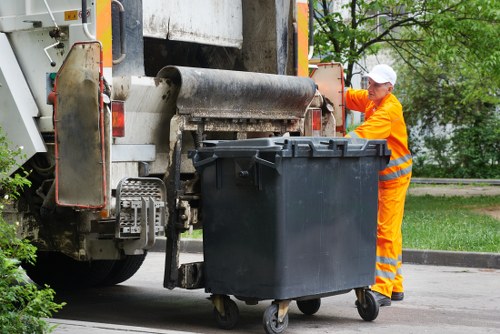Garden Clearance Manor House: Transforming Historic Grounds

Maintaining a manor house’s garden is both a privilege and a responsibility. These sprawling estates often come with extensive grounds that require regular upkeep and occasional clearance. Garden clearance at a manor house goes beyond simple maintenance; it involves preserving the historical integrity while ensuring the space remains functional and beautiful.
Whether you’re dealing with overgrown paths, outdated garden structures, or invasive plant species, a thorough garden clearance can breathe new life into a manor’s outdoor spaces. This process not only enhances the aesthetic appeal but also ensures the longevity of the garden’s features.
Understanding the unique challenges of clearing a manor house garden is essential. These gardens often feature a mix of formal layouts, wildflower meadows, and ancient trees, each requiring a tailored approach to clearance.

Why Garden Clearance is Essential for Manor Houses
Garden clearance is crucial for maintaining the charm and functionality of manor house gardens. Over time, gardens can become cluttered with debris, dead plants, and unwanted growth, which can detract from the overall beauty of the estate.
Regular clearance helps prevent the spread of diseases among plants, reduces the risk of pests, and maintains the structural integrity of garden features like patios, walkways, and water features.
Moreover, a well-maintained garden can significantly enhance the property’s value, making it not only a pleasure to visit but also a sound investment.

Steps to Effective Garden Clearance
1. Assess the Garden’s Current State
Begin by evaluating the entire garden area. Identify areas that require immediate attention, such as overgrown sections, structural damages, or invasive species.
2. Develop a Clearance Plan
Create a detailed plan outlining the steps needed to clear and restore the garden. This plan should prioritize tasks based on urgency and the garden’s overall layout.
3. Remove Unwanted Vegetation
Carefully remove dead plants, invasive species, and any vegetation that disrupts the garden’s harmony. This step is crucial for preventing future overgrowth and maintaining plant health.

Tools and Equipment Needed
- Pruning shears and loppers
- Rakes and shovels
- Wheelbarrows
- Protective gloves and gear
- Lawnmowers and string trimmers
Having the right tools makes the clearance process more efficient and ensures that the garden is cleared without causing unnecessary damage to existing plants and structures.
Investing in quality equipment can save time and effort, especially when dealing with large estates where the garden spans several acres.
Safety should always be a priority. Ensure that all equipment is in good working condition and that appropriate safety measures are in place during the clearance process.

Hiring Professional Garden Clearance Services
Given the complexity of manor house gardens, hiring professional garden clearance services can be highly beneficial. Experts bring the necessary experience, tools, and knowledge to handle large and intricate garden spaces efficiently.
Professional services ensure that the clearance is done meticulously, preserving the garden’s historical elements while enhancing its beauty and functionality.
When selecting a service provider, look for companies with experience in maintaining historic estates and a portfolio that showcases their expertise in garden clearance.
Local Areas Serving Manor House Garden Clearance
Manor house gardens require specialized care, and local experts understand the unique landscape and historical significance of these estates. Here are some areas that excel in garden clearance for manor houses:
- Greenwich Manor – Known for its expansive rose gardens and classic water features.
- Hampton Court – Features intricate hedge mazes and historic orchards.
- Blenheim Palace – Boasts vast woodlands and formal Italian gardens.
- Chatsworth House – Renowned for its flower displays and scenic parklands.
- Windsor Castle – Offers royal gardens with a mix of traditional and contemporary landscapes.
- Syon Park – Combines horticultural excellence with historical architecture.
- Sandringham House – Features natural wooded areas and beautifully maintained grounds.
- Highclere Castle – Known for its dramatic landscape and seasonal gardens.
- Blenheim Estate – Offers diverse plant collections and formal garden areas.
- Alnwick Castle – Mixes historic plantings with modern garden designs.
- Kelvingrove Hall – Features Victorian-era gardens and contemporary green spaces.
- Belvoir Castle – Known for its meticulous garden beds and surrounding parkland.
- Holkham Hall – Offers extensive natural estates and formal gardens.
- Cliveden House – Combines baroque gardens with natural landscapes.
- Blenheim Garden Farm – Integrates agricultural practices with traditional garden clearing.
Maintaining the Legacy of Manor House Gardens
Clearance is not just about removing unwanted elements; it’s about preserving the legacy and enhancing the future of manor house gardens.
Implementing sustainable gardening practices ensures that the gardens remain healthy and vibrant for generations to come. This includes using eco-friendly methods for waste disposal, selecting native plants to support local wildlife, and maintaining soil health through proper management.
Educating estate managers and gardeners about the historical significance of each plant and feature can foster a deeper appreciation and more thoughtful maintenance practices.
Cost Considerations for Garden Clearance
The cost of garden clearance varies based on the size of the estate, the complexity of the garden, and the extent of the work required.
Factors influencing costs include labor, equipment rental or purchase, disposal fees, and any additional services like landscaping or restoration.
It’s important to obtain multiple quotes from reputable service providers and to understand the scope of services included to ensure the best value for your investment.
Environmental Impact of Garden Clearance
Garden clearance can have significant environmental implications. Responsible practices ensure that the clearance process supports biodiversity and minimizes waste.
Recycling plant material, composting organic waste, and reusing resources whenever possible are essential steps in reducing the environmental footprint of garden clearance.
Collaborating with eco-conscious service providers can help align the clearance efforts with broader sustainability goals.
Seasonal Considerations for Clearance
Timing is crucial when planning garden clearance. Each season offers unique opportunities and challenges:
- Spring: Ideal for pruning and planting new growth.
- Summer: Focuses on weeding and maintaining lush plantings.
- Autumn: Perfect for clearing fallen leaves and preparing for winter.
- Winter: Time for planning and repairing garden structures.
Understanding the seasonal dynamics helps in scheduling clearance activities that align with the garden’s natural cycles.
Preserving Historical Features During Clearance
Manor house gardens often feature historical elements such as statues, fountains, and old trees. Preserving these during clearance is paramount to maintaining the garden’s heritage.
Careful planning and execution ensure that these features are protected while clearing the surrounding areas. This might involve shielding delicate structures or conducting specialized cleaning and restoration work.
Engaging with conservation experts can provide additional insights into safeguarding these priceless features.
Enhancing Garden Aesthetics Post-Clearance
Once the clearance is complete, the next step is to rejuvenate the garden’s appearance. This can involve replanting, redesigning pathways, and introducing new garden elements that complement the manor’s style.
Incorporating a mix of perennial and annual plants can ensure year-round beauty and resilience against pests and diseases.
Strategic lighting, seating areas, and water features can further enhance the garden’s functionality and aesthetic appeal.
Conclusion
Garden clearance for manor houses is a delicate balance between maintaining historical integrity and introducing modern functionality. By following a structured approach, utilizing the right tools, and possibly engaging professional services, you can ensure that these beautiful estates continue to thrive.
Preserving the legacy of manor house gardens not only enhances their beauty but also safeguards their history for future generations to enjoy.
Frequently Asked Questions
1. How often should a manor house garden undergo clearance?
It is recommended to perform a thorough clearance at least once a year, with seasonal maintenance to address specific growth and changes throughout the year.
2. Can garden clearance help in preventing plant diseases?
Yes, clearing dead or diseased plants helps prevent the spread of diseases to healthy plants, maintaining the overall health of the garden.
3. Is professional garden clearance necessary for manor houses?
While optional, professional clearance ensures that the process is handled efficiently and that historical features are preserved, making it a worthwhile investment for large estates.
4. What are the environmental benefits of proper garden clearance?
Proper clearance supports biodiversity, improves soil health, and reduces waste through recycling and composting, contributing to a more sustainable environment.
5. How can I maintain my manor house garden after clearance?
Regular maintenance, including pruning, weeding, and seasonal planting, alongside sustainable practices, will help keep the garden in pristine condition.